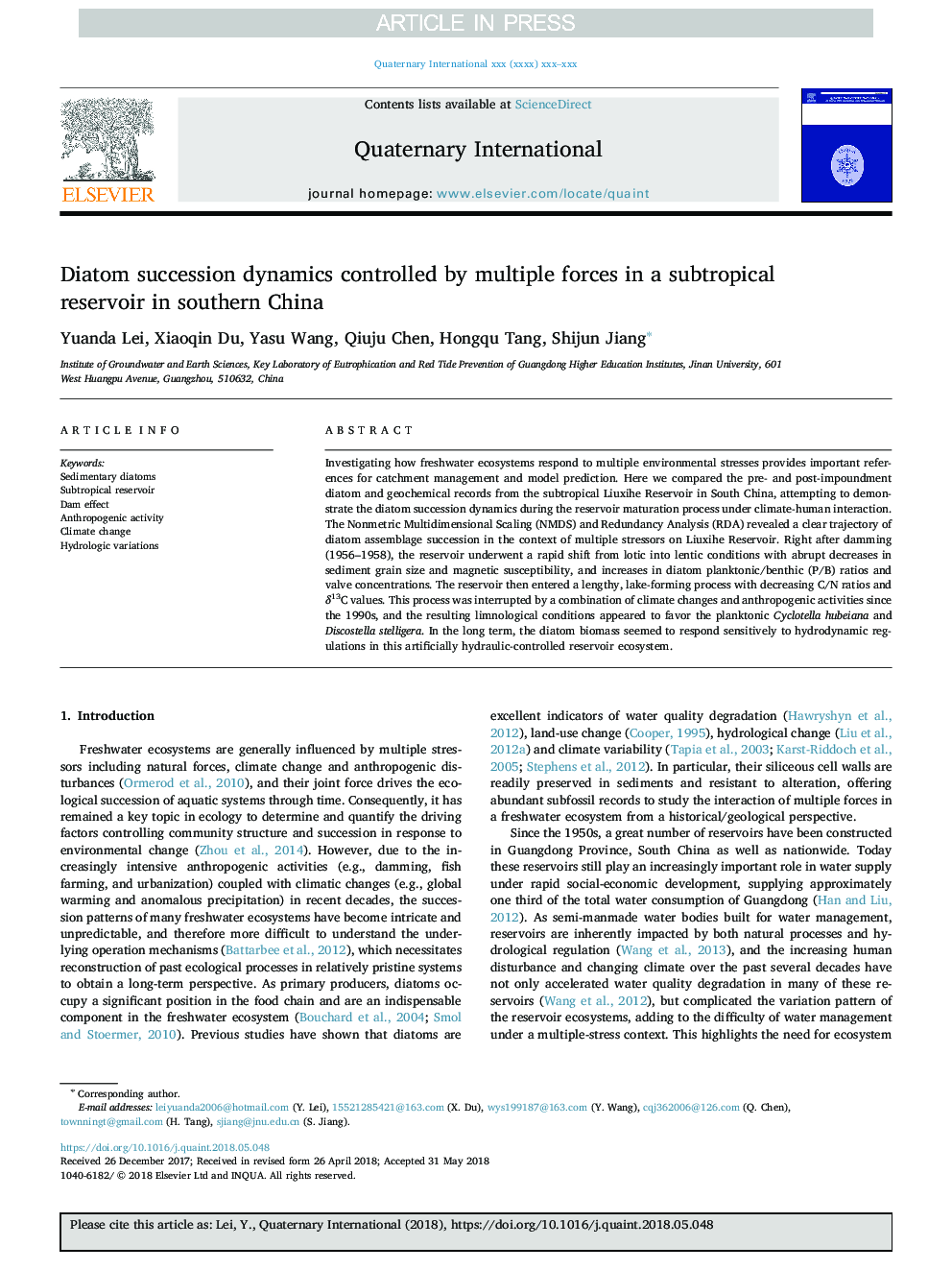| Article ID | Journal | Published Year | Pages | File Type |
|---|---|---|---|---|
| 12132204 | Quaternary International | 2018 | 18 Pages |
Abstract
Investigating how freshwater ecosystems respond to multiple environmental stresses provides important references for catchment management and model prediction. Here we compared the pre- and post-impoundment diatom and geochemical records from the subtropical Liuxihe Reservoir in South China, attempting to demonstrate the diatom succession dynamics during the reservoir maturation process under climate-human interaction. The Nonmetric Multidimensional Scaling (NMDS) and Redundancy Analysis (RDA) revealed a clear trajectory of diatom assemblage succession in the context of multiple stressors on Liuxihe Reservoir. Right after damming (1956-1958), the reservoir underwent a rapid shift from lotic into lentic conditions with abrupt decreases in sediment grain size and magnetic susceptibility, and increases in diatom planktonic/benthic (P/B) ratios and valve concentrations. The reservoir then entered a lengthy, lake-forming process with decreasing C/N ratios and δ13C values. This process was interrupted by a combination of climate changes and anthropogenic activities since the 1990s, and the resulting limnological conditions appeared to favor the planktonic Cyclotella hubeiana and Discostella stelligera. In the long term, the diatom biomass seemed to respond sensitively to hydrodynamic regulations in this artificially hydraulic-controlled reservoir ecosystem.
Keywords
Related Topics
Physical Sciences and Engineering
Earth and Planetary Sciences
Geology
Authors
Yuanda Lei, Xiaoqin Du, Yasu Wang, Qiuju Chen, Hongqu Tang, Shijun Jiang,
